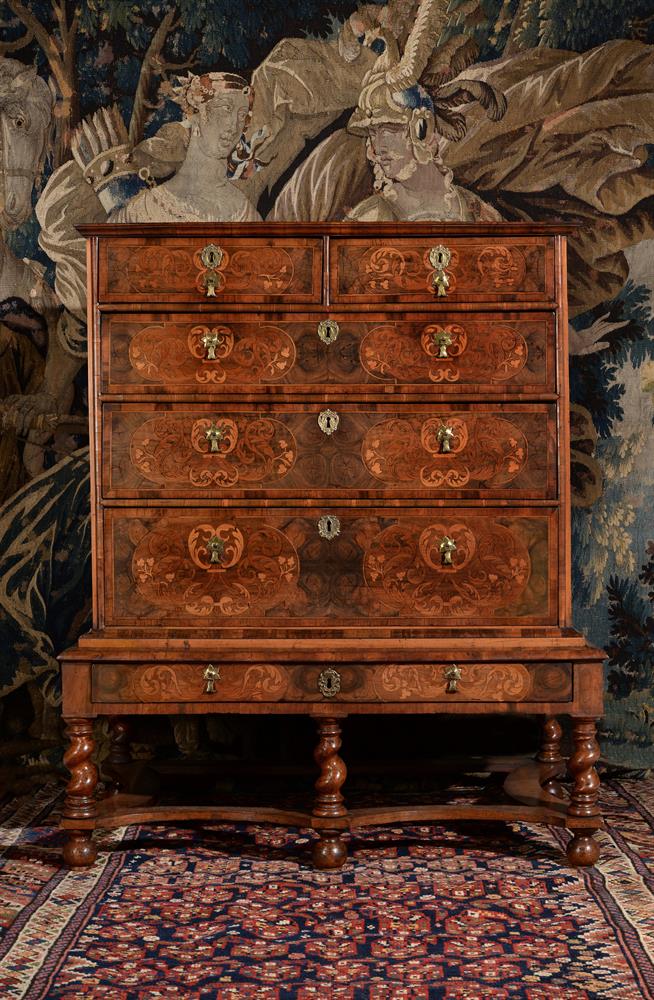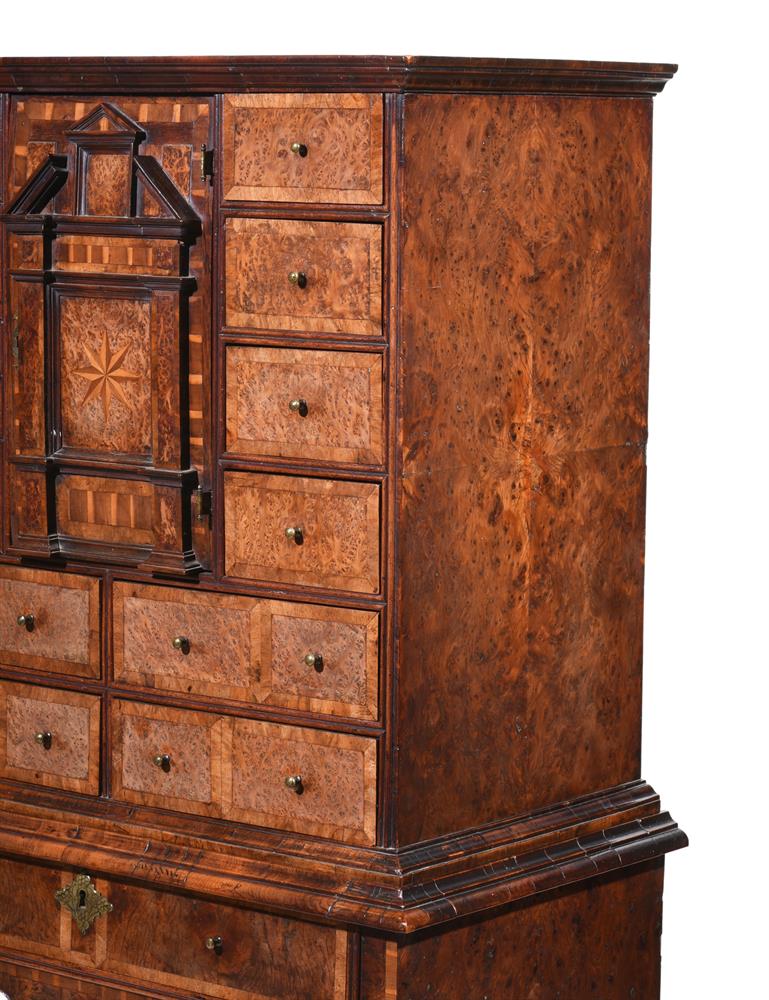A rare William & Mary Scottish silver lace-back spoon by Andro Gilmour, Edinburgh 1692, assay master John Borthwick, of transitional form from Trefid to dog-nose, the back of the bowl with a ribbed rat-tail, the top of the back of the stem engraved 'TD' over 'CD', 19.5cm (7 3/4in) long, 56g (1.8 oz) Pickford comments: Until the discovery of this spoon there was no known example of a piece which was attributable to the Edinburgh goldsmith Andro Gilmour. The maker's mark, which is mis-struck, is clearly an initial followed by the letter G in a double circle. Fortunately the right hand side of the first initial can be discerned as a diagonal, which is unique to the letter A. The mark may therefore be safely shown to be AG in a double circle, a mark which, to date, has not been recorded. In the last quarter of the 17th century only two goldsmiths with these initials are recorded in Edinburgh: Andro Gilmour (earliest mention 1686) and Adam Gordon (earliest mention 1696). Since the spoon is clearly struck with the date letter M of 1692 Adam Gordon may be ruled out leaving only Andro Gilmour as the possible maker. The die stamped decoration at the top of the stem overlaps the edge. This is a feature found on the majority of such spoons in England. Only rarely is a perfect ‘fit’ for the decoration ever found. The design of the spoon is interesting having a very rounded top although fitting most comfortably into the Trefid group it is not notched at the top and, although early in date for such a feature, is essentially transitional between trefid and dog-nose. A further consideration is that the top may have been trimmed at a later date. This I feel is unlikely there being little or no evidence of this happening in England (of the countless examples of English spoons of this period that I have examined I cannot recall a single one) Indeed, the opposite is the case where dog-nose spoons have had notches cut to convert them to the more valuable Trefid spoons. Several West country spoons can exhibit this feature, for example see lot 320 sale these rooms 28th September 2011 for a transitional spoon by John Elston, Exeter 1703. Also of note is the fact that Scottish lace-backs are extremely rare, the only two noted are in the National Museum of Scotland. Condition report disclaimer
A rare William & Mary Scottish silver lace-back spoon by Andro Gilmour, Edinburgh 1692, assay master John Borthwick, of transitional form from Trefid to dog-nose, the back of the bowl with a ribbed rat-tail, the top of the back of the stem engraved 'TD' over 'CD', 19.5cm (7 3/4in) long, 56g (1.8 oz) Pickford comments: Until the discovery of this spoon there was no known example of a piece which was attributable to the Edinburgh goldsmith Andro Gilmour. The maker's mark, which is mis-struck, is clearly an initial followed by the letter G in a double circle. Fortunately the right hand side of the first initial can be discerned as a diagonal, which is unique to the letter A. The mark may therefore be safely shown to be AG in a double circle, a mark which, to date, has not been recorded. In the last quarter of the 17th century only two goldsmiths with these initials are recorded in Edinburgh: Andro Gilmour (earliest mention 1686) and Adam Gordon (earliest mention 1696). Since the spoon is clearly struck with the date letter M of 1692 Adam Gordon may be ruled out leaving only Andro Gilmour as the possible maker. The die stamped decoration at the top of the stem overlaps the edge. This is a feature found on the majority of such spoons in England. Only rarely is a perfect ‘fit’ for the decoration ever found. The design of the spoon is interesting having a very rounded top although fitting most comfortably into the Trefid group it is not notched at the top and, although early in date for such a feature, is essentially transitional between trefid and dog-nose. A further consideration is that the top may have been trimmed at a later date. This I feel is unlikely there being little or no evidence of this happening in England (of the countless examples of English spoons of this period that I have examined I cannot recall a single one) Indeed, the opposite is the case where dog-nose spoons have had notches cut to convert them to the more valuable Trefid spoons. Several West country spoons can exhibit this feature, for example see lot 320 sale these rooms 28th September 2011 for a transitional spoon by John Elston, Exeter 1703. Also of note is the fact that Scottish lace-backs are extremely rare, the only two noted are in the National Museum of Scotland. Condition report disclaimer














Testen Sie LotSearch und seine Premium-Features 7 Tage - ohne Kosten!
Lassen Sie sich automatisch über neue Objekte in kommenden Auktionen benachrichtigen.
Suchauftrag anlegen